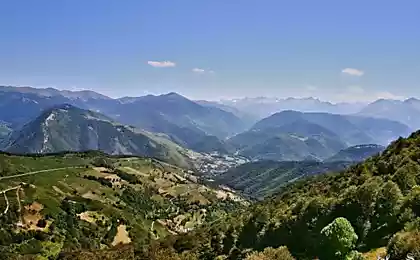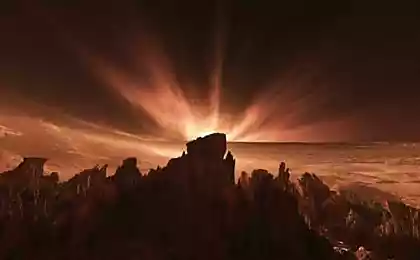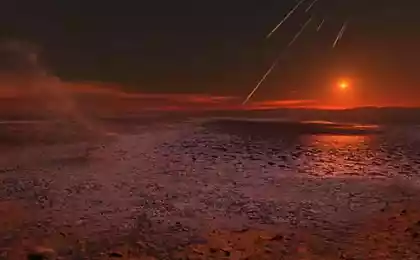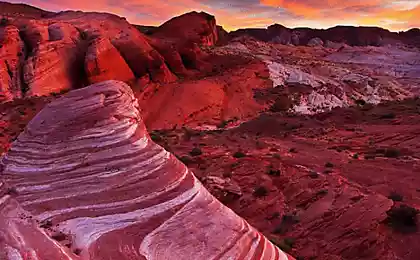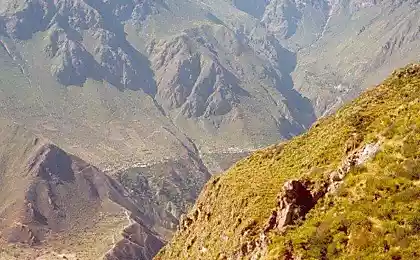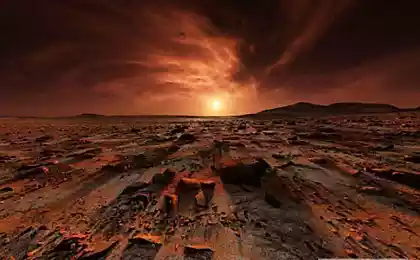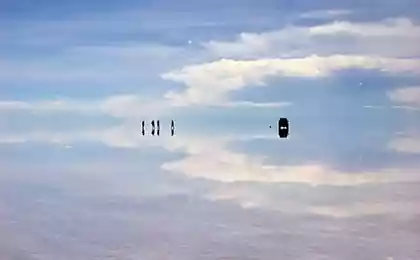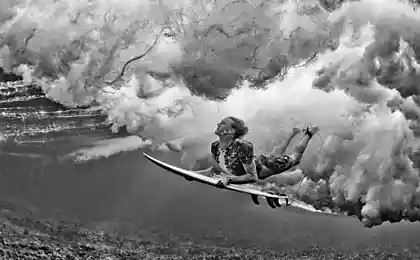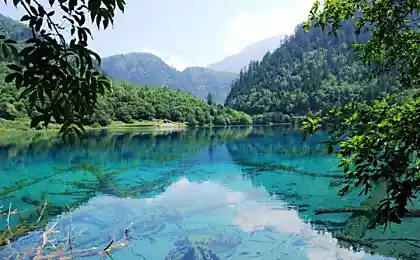926
Danakilskaya hydrochloric Valley - the most ruthless place in the world (14 photos)
Danakilskoe slide, located in the Ethiopian Danakil Desert, known as the hottest place on the planet, and the magazine «National Geographic» christened it "the most ruthless place on Earth».
This depression is home to ethnic Afar people, who are able to withstand the year-round average temperatures of 35 degrees Celsius, although the peak may be as high as 63 degrees.
Nisin is located approximately 100 meters below sea level, and has a large number of red rock, sulfur fields and outputs salt.
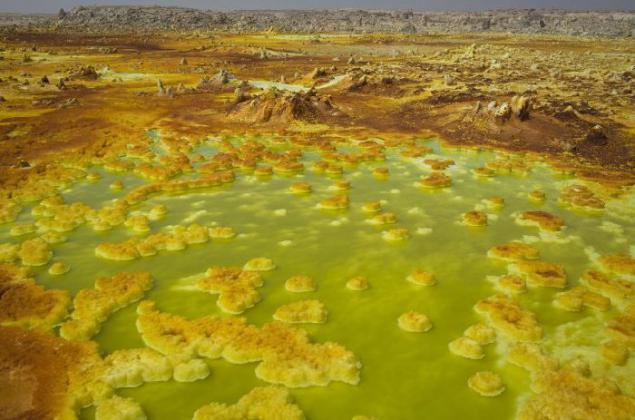
Geologists believe that the salt in these places was delayed gradually over time, as located near the Red Sea floods the region periodically. The extreme desert heat evaporates the water in the flooded areas, leaving behind only the salt.
The Danakil desert salt means money. All the local economy depends on the production and trade of this mineral.
Miners use traditional methods - camel caravans, picks and ropes - to cut, packed and removed from the harsh salt valley.
This is an extremely dangerous job. Heat can kill an unprepared worker and occasional earthquakes occurring in this area, can split the ground and swallow camels.
Danakilskoe decrease - this is one of the lowest points on earth not covered by water. According to geologists, for 10 million years, this scorching desert again submerged.
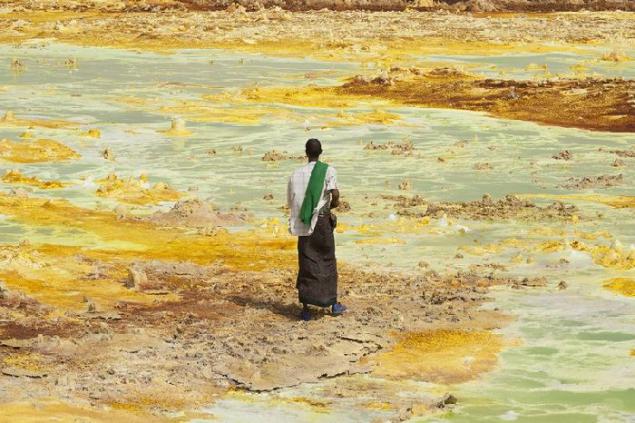
Bright green and gold color - the result of deposition of sulfur from underground hot springs. They look nice, but smell like rotten eggs.
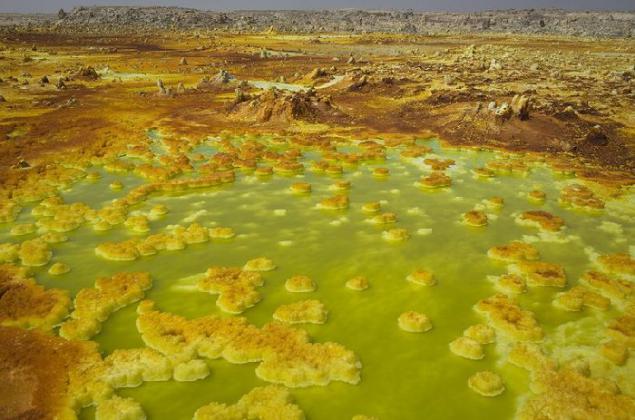
Go to the Danakilskuyu valley takes four days, during which time the salt miners spend the night in the desert with their camels.
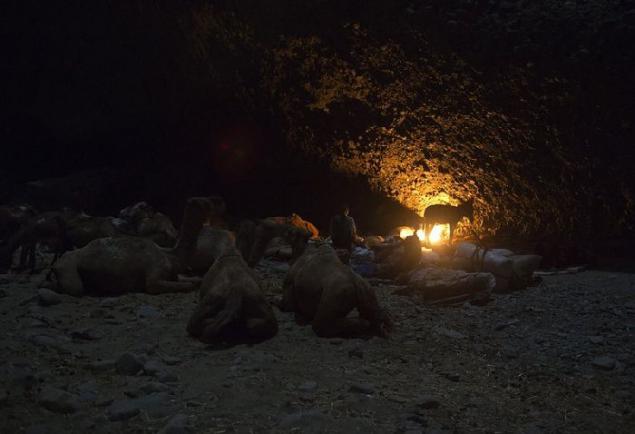
Caravan of camels and working out at dawn. The Ethiopian government has built a paved road to the salt mines, and soon the camel caravans could face competition from trucks.
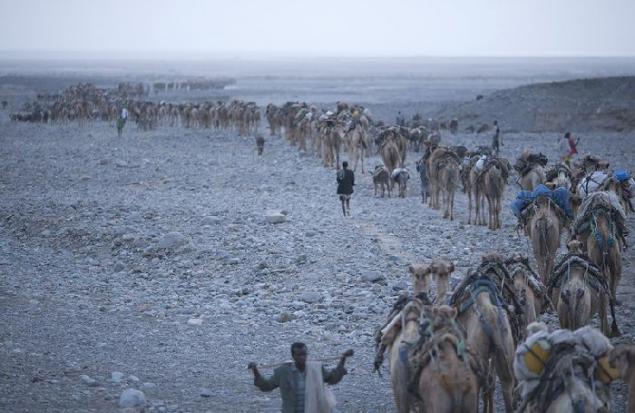
Salt is always close to the surface, and workers do not have to dig deep to get it.
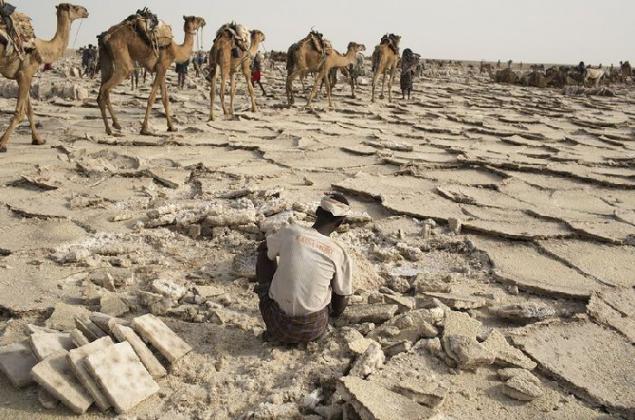
Workers simply cut layers of salt of the earth.
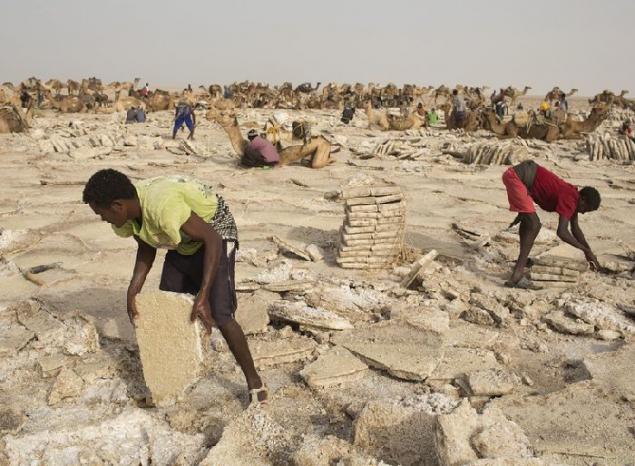
The layers then are cut to make it easier to fold and carry.
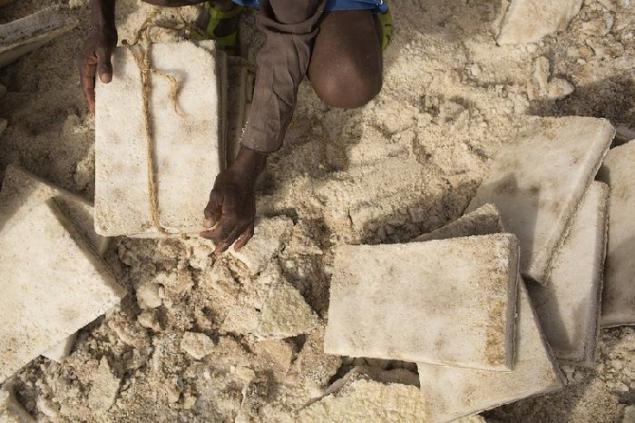
They were then loaded onto camels for a long return trip from the valley.
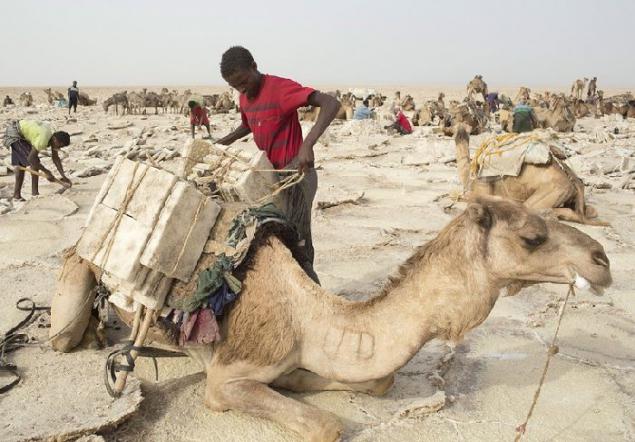
Danakilskaya lowland supplies more than 1, 3 million tons of salt each year.
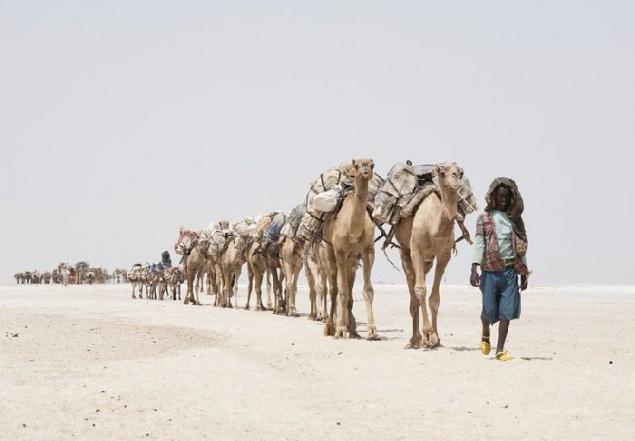
A small desert town Berahil - stop of the salt miners. Caravans unload your burden, and traders stockpiling salt and pay the necessary fees before the mineral is sent to markets across the country.
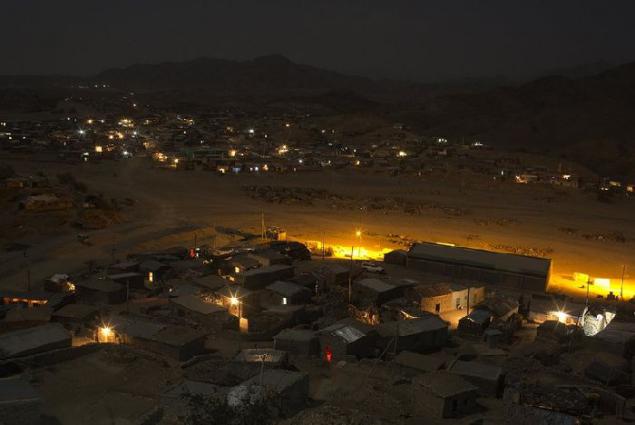
The salt is stored in the warehouses of the Salt Association Berahila - local associations, helping miners to sell their salt traders.
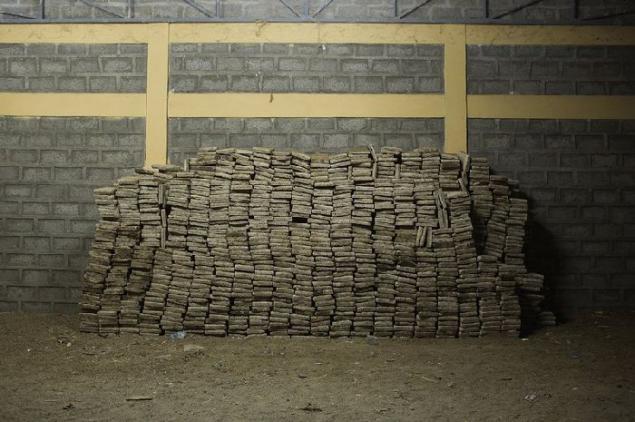
This person prepares the salt sticks for sale. Most of the salt will leave the market Mekele - town, located eight hours from Danakilskoy lowlands.
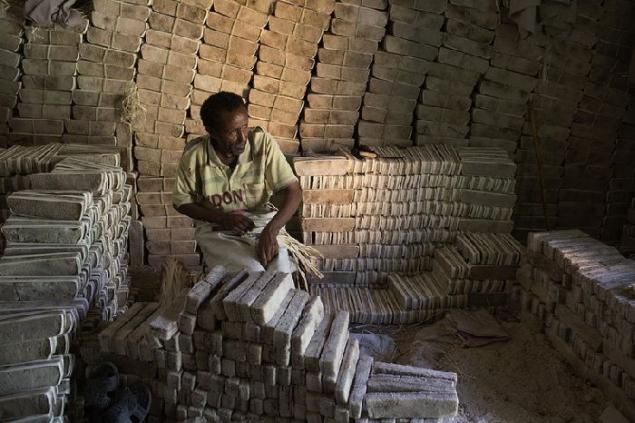
Before the salt used in the region as a currency. Nowadays, most people prefer cash.
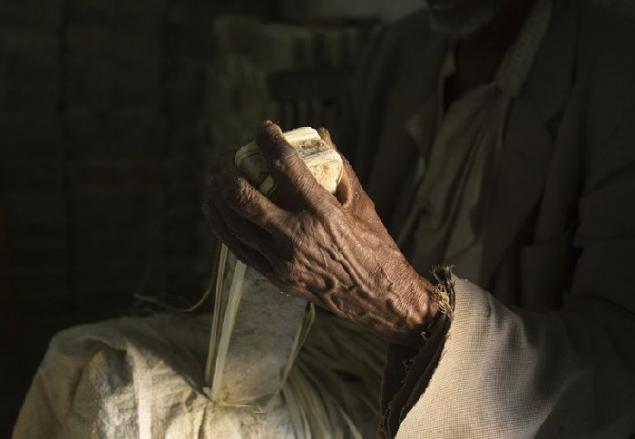
This depression is home to ethnic Afar people, who are able to withstand the year-round average temperatures of 35 degrees Celsius, although the peak may be as high as 63 degrees.
Nisin is located approximately 100 meters below sea level, and has a large number of red rock, sulfur fields and outputs salt.

Geologists believe that the salt in these places was delayed gradually over time, as located near the Red Sea floods the region periodically. The extreme desert heat evaporates the water in the flooded areas, leaving behind only the salt.
The Danakil desert salt means money. All the local economy depends on the production and trade of this mineral.
Miners use traditional methods - camel caravans, picks and ropes - to cut, packed and removed from the harsh salt valley.
This is an extremely dangerous job. Heat can kill an unprepared worker and occasional earthquakes occurring in this area, can split the ground and swallow camels.
Danakilskoe decrease - this is one of the lowest points on earth not covered by water. According to geologists, for 10 million years, this scorching desert again submerged.

Bright green and gold color - the result of deposition of sulfur from underground hot springs. They look nice, but smell like rotten eggs.

Go to the Danakilskuyu valley takes four days, during which time the salt miners spend the night in the desert with their camels.

Caravan of camels and working out at dawn. The Ethiopian government has built a paved road to the salt mines, and soon the camel caravans could face competition from trucks.

Salt is always close to the surface, and workers do not have to dig deep to get it.

Workers simply cut layers of salt of the earth.

The layers then are cut to make it easier to fold and carry.

They were then loaded onto camels for a long return trip from the valley.

Danakilskaya lowland supplies more than 1, 3 million tons of salt each year.

A small desert town Berahil - stop of the salt miners. Caravans unload your burden, and traders stockpiling salt and pay the necessary fees before the mineral is sent to markets across the country.

The salt is stored in the warehouses of the Salt Association Berahila - local associations, helping miners to sell their salt traders.

This person prepares the salt sticks for sale. Most of the salt will leave the market Mekele - town, located eight hours from Danakilskoy lowlands.

Before the salt used in the region as a currency. Nowadays, most people prefer cash.







